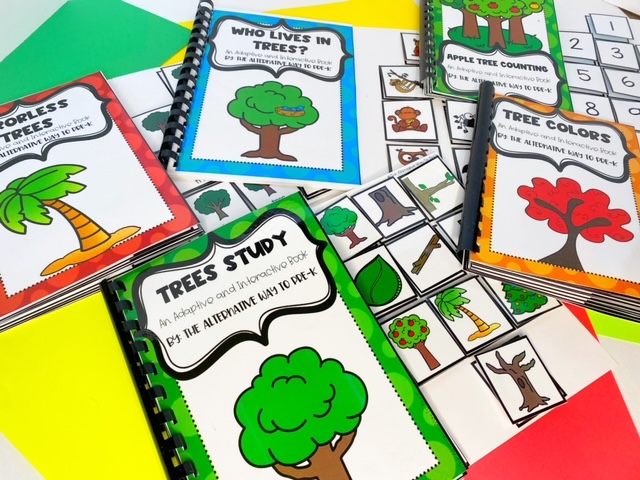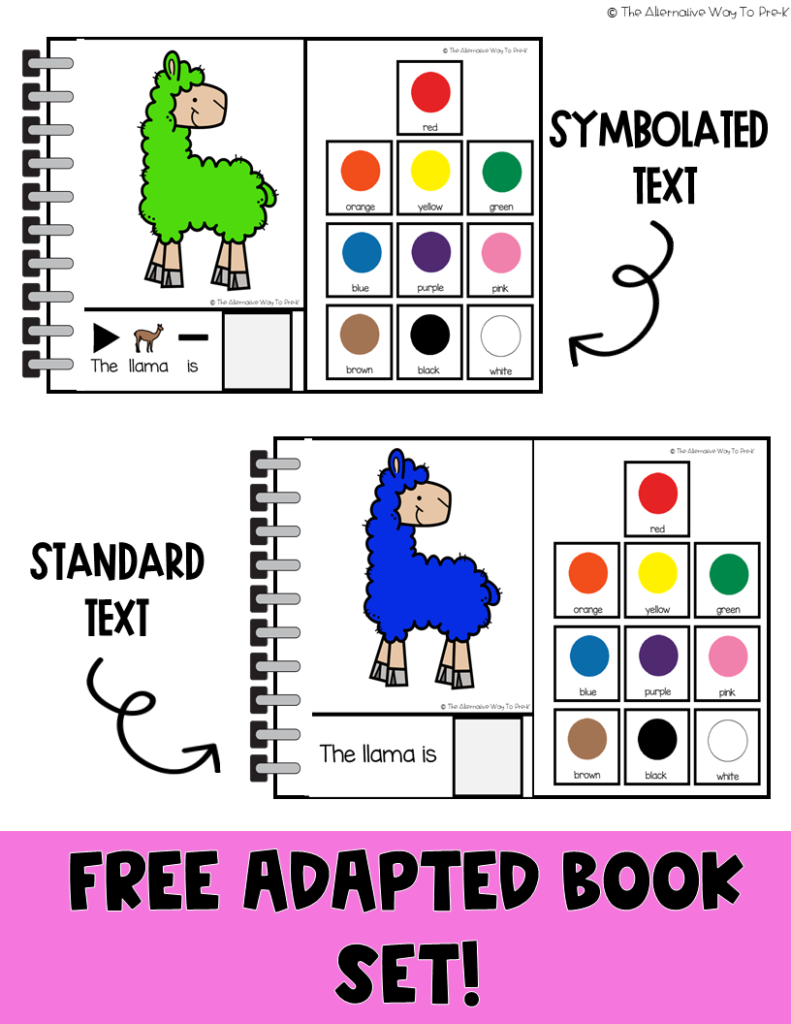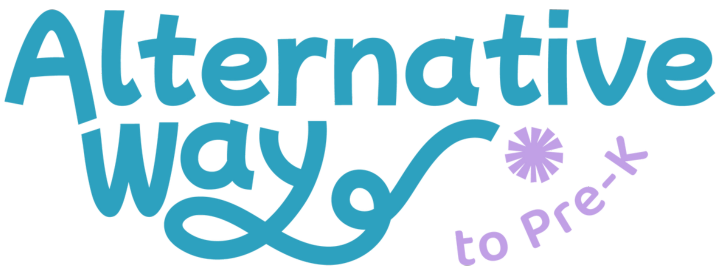If you have been to my TPT Store or follow me on Instagram, you will see that I am all about adapted and interactive books. These books are so versatile!
They can be used for 1:1, small, and large groups, task bins, assessment, independent, partner, and morning work. In this post, I will show you how to use adapted books in your own classroom! I will answer the what, why, and how.
What Are Adapted Books?
For those of you who don’t know, Adapted & Interactive books are abbreviated books with moveable pieces. The text is usually adapted to be less wordy and easier for early readers.
It also may have symbolated text. That means the words are accompanied by picture symbols that mimic the AAC user’s device.
They can even come in an errorless learning format which is a great introduction for early learners still working on pre-academic skills.

Why Use Adapted Books
There are so many reasons to use adapted books. They work in a variety of ways for so many different types of users. Skills adapted books teach and reinforce include but are not limited to:
- Fine motor practice
- Matching
- Sorting
- Vocabulary and core words
- Counting with 1:1 correspondence
- Early literacy skills
- Pre-academic skills
- Promote Independence
- On Task
- Social skills
- Turn Taking
- Communication and language
- Errorless Learning
How To Implement Adapted Books
Adapted and interactive books can be used in various ways throughout the classroom. Let me break down how I use them in my own classroom.
Pre and post-assessment: I can assess students’ knowledge of a new unit with an adapted book. I can present an adapted book correlating with our new theme or study.
We can go on a picture walk to establish this student’s current knowledge of thematic vocabulary.
I can administer the same assessment at the end of the unit to collect data on their progress. The same can be done for adapted books about colors, counting, and even errorless books.
Whole Group Instruction: I love incorporating adapted and interactive books into whole group storytime. It is a great way to get students engaged and helps me differentiate instruction for each learner.
For example, if we are reading The Wheels On The Bus Adapted and Interactive Book I may ask one student to find the matching symbol for the current page and receptively identify it, another student I may ask to expressively identify it, and the next student I can check for understanding and ask “what do the wheels do?”
The possibilities are endless!
Implement Creative Curriculum: If you have seen my post on Creative Curriculum you know I am constantly adapting it. One way I modify it is with adapted and interactive books! These books allow me to break down the focus questions more in-depth. I can also use the study focus and apply it to more appropriate leveled books including errorless learning options.
Classroom Library: Our classroom library is always fully stocked with adapted books. This not only makes literacy more accessible to my students but also fosters independence and ownership of their learning.
Students are able to choose which book they prefer and read it with minimal support from an adult. They are always so proud of themselves when they are able to read it on their own!



